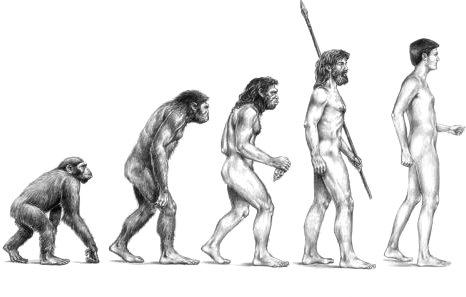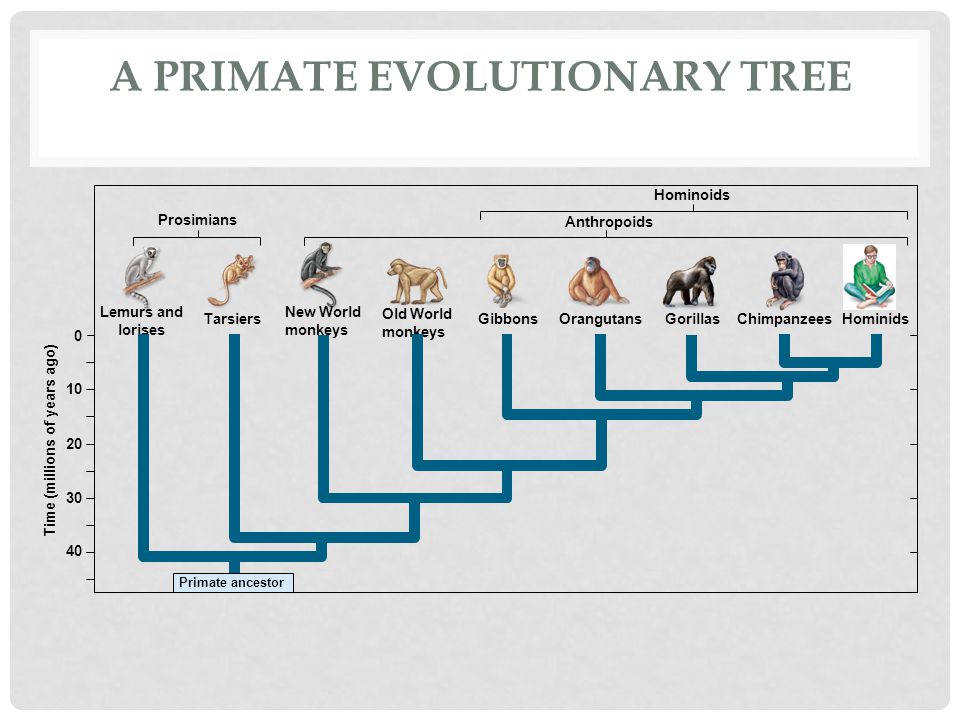
|
|
This
Old Earth 1. Overview
Part 3: Death Before the Fall?
|
|
|
It is commonly held that Christianity as a whole rejects the theory of evolution, despite the abundance of evidence that exists for it. But the fact is not all Christians do so. More and more Christians are considering the possibility that evolution could be a tool that God used to bring about His creation. More and more scientists who believe in evolution have expressed their faith in God and the Bible and see no conflict between their faith and science. Those who insist on rejecting evolution based on theology do a disservice to fellow Christians who only want to know the truth. The following quote by scientist Bill Nye is from his book, Undeniable: Evolution and the Science of Creation: Even the theological objections to evolution stand on shaky ground. For the last century and a half, ever since the publication of Darwin’s On the Evolution of Species in 1859, many people have come to believe that evolution is in conflict with their religious beliefs. At the same time, many people around the world who hold deep religious convictions see no conflict between their spiritual beliefs and their scientific understanding of evolution. So the naysayers are not only casting doubt on science and nonbelievers; they are also ignoring the billions of non-conflicted believers around the world, dismissing their views as unworthy. Many Christians, however, claim that since Darwin and many other evolution scientists were or are atheists (or at least agnostics) then the theory of evolution must be atheistic and anti-God. But the fact is that there is nothing in the Bible or the theory of evolution which, when properly understood, is contradictory. In fact the more one understands evolution, the greater an appreciation one has for God’s creation. One argument against the theory of evolution has been that mutations to DNA have not been seen to be beneficial for a species. Also the chances of such mutations happening “randomly” are considered to be virtually nil. The argument goes that the chances of such “random” mutations bringing about the vast complexity we see in nature is equivalent to a tornado whipping through a junkyard and assembling a 747 jet. This is another example of misunderstanding how evolution works. The problem with that argument is that natural selection is not “random” in the same sense as the complete chaos associated with a tornado in a junkyard. Imperfect copying of DNA can result in small modifications of an organism, such as the beaks of the finches that Charles Darwin studied. Then other factors such as sexual selection and isolation of a population can affect how well the organism adapts to its environment and reproduces. Such changes may seem random, but what if God was the one directing those mutations, in order to develop His creation? Many Christians dispute that idea and even flat out deny the possibility, as I myself did for many years, even in a previously posted article on this site. But we will examine the reasons for such dispute and demonstrate that belief in the Bible and evolution are not mutually exclusive. |
|
|
To begin with, we must define the term evolution. The frequently imitated picture of The Ascent of Man (seen below), like the theory of evolution itself, is commonly misunderstood. Many people, both Christian and non-Christian, mistakenly believe that the theory of evolution says that man descended from apes. It is sometimes asked, if evolution were true, why are there still monkeys (or apes) and where are the intermediate forms?
What those who ask these questions fail to understand is that the theory of evolution does not say that man evolved from apes, but that man and apes evolved from a common ancestor. But even that statement is an over-simplification. As the chart below illustrates, humans and chimpanzees evolved from a common ancestor; that common ancestor and gorillas evolved from an older common ancestor; that common ancestor and orangutans evolved from a still older common ancestor, and so on.
The following is from Introduction to Evolutionary Biology by Chris Colby, which can be seen in its entirety here. Evolution is a change in the gene pool of a population over time. A gene is a hereditary unit that can be passed on unaltered for many generations. The gene pool is the set of all genes in a species or population. […] In order to understand evolution, it is necessary to view populations as a collection of individuals, each harboring a different set of traits. A single organism is never typical of an entire population unless there is no variation within that population. Individual organisms do not evolve, they retain the same genes throughout their life. When a population is evolving, the ratio of different genetic types is changing – each individual organism within a population does not change. … The process of evolution can be summarized in three sentences: Genes mutate [gene: a hereditary unit]. Individuals are selected. Populations evolve. Evolution can be divided into microevolution and macroevolution. The kind of evolution documented above is microevolution. Larger changes, such as when a new species is formed, are called macroevolution. Some biologists feel the mechanisms of macroevolution are different from those of microevolutionary change. Others think the distinction between the two is arbitrary – macroevolution is cumulative microevolution. The word evolution has a variety of meanings. The fact that all organisms are linked via descent to a common ancestor is often called evolution. The theory of how the first living organisms appeared is often called evolution. This should be called abiogenesis. And frequently, people use the word evolution when they really mean natural selection – one of the many mechanisms of evolution. So rather than one species changing into another, what happens is that one population develops slight differences from another of the same species, due to superior adaptation to its environment. This is called microevolution and can be observed in nature. The theory is that given enough time, one population can diverge from another to the point where they are no longer able to mate with each other, thus forming a new species. And over billions of years diverging species can develop which may not be that different from their immediate antecedents, but are very different from more distant ancestors. The pattern looks more like the evolutionary tree of life seen below. (Click on the image to see a full sized view).
Evolution is not progress. The popular notion that evolution can be represented as a series of improvements from simple cells, through more complex life forms, to humans (the pinnacle of evolution), can be traced to the concept of the scale of nature. This view is incorrect. All species have descended from a common ancestor. As time went on, different lineages of organisms were modified with descent to adapt to their environments. Thus, evolution is best viewed as a branching tree or bush, with the tips of each branch representing currently living species. No living organisms today are our ancestors. Every living species is as fully modern as we are with its own unique evolutionary history. No extant species are "lower life forms," atavistic stepping stones paving the road to humanity. […] Microevolution can be studied directly. Macroevolution cannot. Macroevolution is studied by examining patterns in biological populations and groups of related organisms and inferring process from pattern. Given the observation of microevolution and the knowledge that the earth is billions of years old – macroevolution could be postulated. But this extrapolation, in and of itself, does not provide a compelling explanation of the patterns of biological diversity we see today. Evidence for macroevolution, or common ancestry and modification with descent, comes from several other fields of study. These include: comparative biochemical and genetic studies, comparative developmental biology, patterns of biogeography, comparative morphology and anatomy, and the fossil record.
|
|
|
The evidence shows that there was development from simpler to more complex species. The following is from 29+ Evidences for Macroevolution by Douglas Theobald, which can be seen here According to the theory of common descent, modern living organisms, with all their incredible differences, are the progeny of one single species in the distant past. In spite of the extensive variation of form and function among organisms, several fundamental criteria characterize all life. Some of the macroscopic properties that characterize all of life are (1) replication, (2) heritability (characteristics of descendants are correlated with those of ancestors), (3) catalysis, and (4) energy utilization (metabolism). At a very minimum, these four functions are required to generate a physical historical process that can be described by a phylogenetic tree. If every living species descended from an original species that had these four obligate functions, then all living species today should necessarily have these functions (a somewhat trivial conclusion). Most importantly, however, all modern species should have inherited the structures that perform these functions. Thus, a basic prediction of the genealogical relatedness of all life, combined with the constraint of gradualism, is that organisms should be very similar in the particular mechanisms and structures that execute these four basic life processes. Not only are the building blocks of life the same in all organisms, but the genetic code that transmits the data is the same as well. In addition, contrary to the claims of many anti-evolutionists, intermediate and transitional forms have indeed been found. Fossils have been discovered that are intermediate forms between birds and reptiles, reptiles and mammals, humans and apes, and legged sea mammals. (See here and here.) The fossil records demonstrate the chronological development throughout the different periods of time, represented by the different strata in the geological column. (Some claim that the whole geological column does not exist in its entirety anywhere in the world, but this is actually not true.) Other factors combine with the fossil record, such as genetic studies, biogeography, and comparative morphology and anatomy, to indicate that some form of long term development has occurred. There are a few different possibilities that would fit the overall concept of Old Earth Creationism, and explain the evidence that is observed. The “lower” animals could have evolved and man still brought into being by “special” creation. Or hominids similar to man could have become “human” in one way or another. Or the animals could have developed by a process known as “punctuated equilibrium” in which species remain unchanged for a period of time, and then sudden change occurred. There is a lot of debate on whether the fossil record shows this or not. There will probably never be complete agreement even among Christians. Fortunately beliefs about the origin of man are not among the requirements for salvation. Only confession of Jesus Christ and belief of the Gospel are required. There are many complex scientific factors to consider in the study of evolution, and it is beyond the scope of this article to explore them. Many web sites dedicated to that very study do a much better job at it than I could do. In this article I want to focus on why evolution is not incompatible with the record of Scripture, which I will handle next.
For Further Reading: • Introduction to Evolutionary Biology • 29+ Evidences for Macroevolution |
|
|
This page last updated October, 2018
|
E-mail: mclarke@godskingdomfirst.org




